François Michaud
Memory Management for Real-Time Appearance-Based Loop Closure Detection
Jul 22, 2024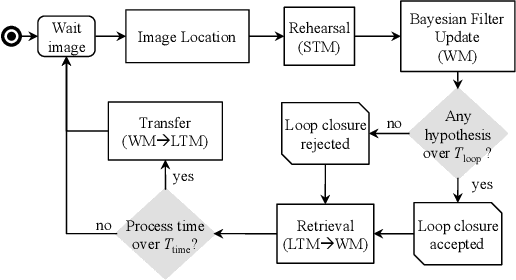
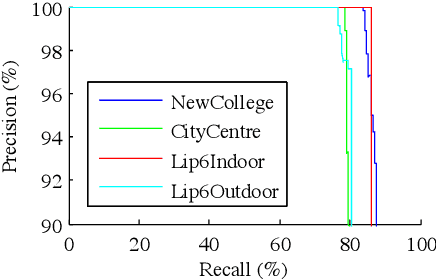
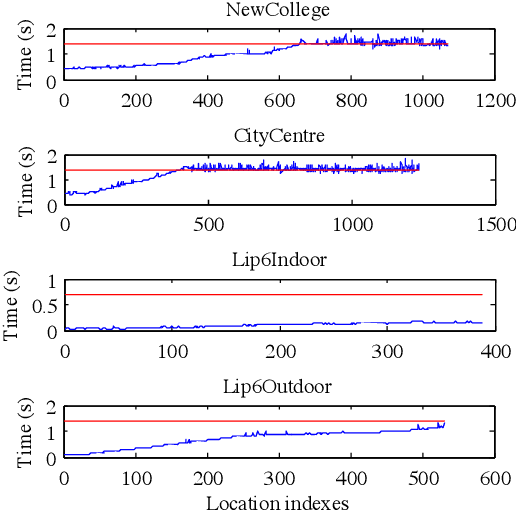

Abstract:Loop closure detection is the process involved when trying to find a match between the current and a previously visited locations in SLAM. Over time, the amount of time required to process new observations increases with the size of the internal map, which may influence real-time processing. In this paper, we present a novel real-time loop closure detection approach for large-scale and long-term SLAM. Our approach is based on a memory management method that keeps computation time for each new observation under a fixed limit. Results demonstrate the approach's adaptability and scalability using four standard data sets.
* 6 pages, 3 figures. arXiv admin note: substantial text overlap with arXiv:2407.15304
Appearance-Based Loop Closure Detection for Online Large-Scale and Long-Term Operation
Jul 22, 2024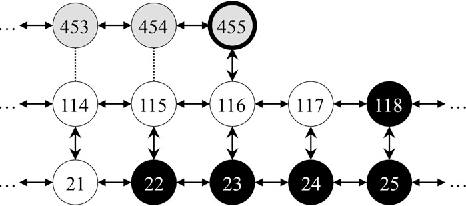
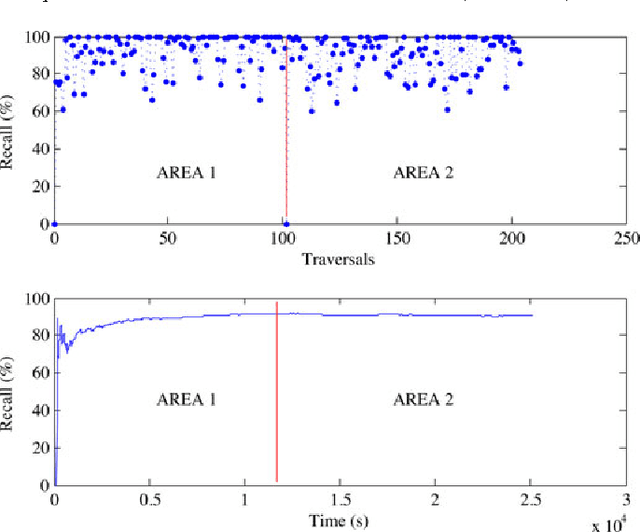
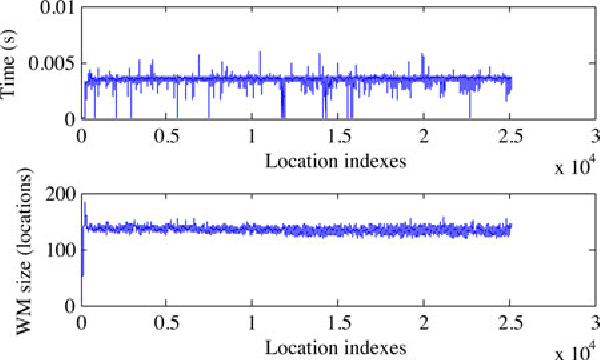
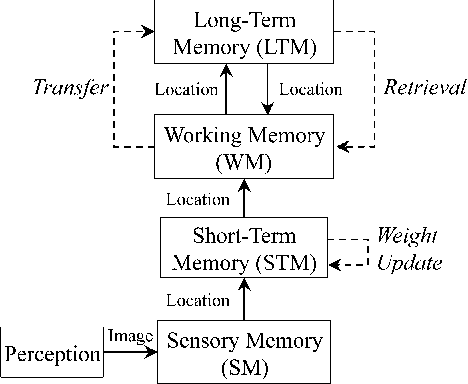
Abstract:In appearance-based localization and mapping, loop closure detection is the process used to determinate if the current observation comes from a previously visited location or a new one. As the size of the internal map increases, so does the time required to compare new observations with all stored locations, eventually limiting online processing. This paper presents an online loop closure detection approach for large-scale and long-term operation. The approach is based on a memory management method, which limits the number of locations used for loop closure detection so that the computation time remains under real-time constraints. The idea consists of keeping the most recent and frequently observed locations in a Working Memory (WM) used for loop closure detection, and transferring the others into a Long-Term Memory (LTM). When a match is found between the current location and one stored in WM, associated locations stored in LTM can be updated and remembered for additional loop closure detections. Results demonstrate the approach's adaptability and scalability using ten standard data sets from other appearance-based loop closure approaches, one custom data set using real images taken over a 2 km loop of our university campus, and one custom data set (7 hours) using virtual images from the racing video game ``Need for Speed: Most Wanted''.
* 12 pages, 11 figures
Online Global Loop Closure Detection for Large-Scale Multi-Session Graph-Based SLAM
Jul 22, 2024



Abstract:For large-scale and long-term simultaneous localization and mapping (SLAM), a robot has to deal with unknown initial positioning caused by either the kidnapped robot problem or multi-session mapping. This paper addresses these problems by tying the SLAM system with a global loop closure detection approach, which intrinsically handles these situations. However, online processing for global loop closure detection approaches is generally influenced by the size of the environment. The proposed graph-based SLAM system uses a memory management approach that only consider portions of the map to satisfy online processing requirements. The approach is tested and demonstrated using five indoor mapping sessions of a building using a robot equipped with a laser rangefinder and a Kinect.
* 6 pages, 12 figures
RTAB-Map as an Open-Source Lidar and Visual SLAM Library for Large-Scale and Long-Term Online Operation
Mar 10, 2024Abstract:Distributed as an open source library since 2013, RTAB-Map started as an appearance-based loop closure detection approach with memory management to deal with large-scale and long-term online operation. It then grew to implement Simultaneous Localization and Mapping (SLAM) on various robots and mobile platforms. As each application brings its own set of contraints on sensors, processing capabilities and locomotion, it raises the question of which SLAM approach is the most appropriate to use in terms of cost, accuracy, computation power and ease of integration. Since most of SLAM approaches are either visual or lidar-based, comparison is difficult. Therefore, we decided to extend RTAB-Map to support both visual and lidar SLAM, providing in one package a tool allowing users to implement and compare a variety of 3D and 2D solutions for a wide range of applications with different robots and sensors. This paper presents this extended version of RTAB-Map and its use in comparing, both quantitatively and qualitatively, a large selection of popular real-world datasets (e.g., KITTI, EuRoC, TUM RGB-D, MIT Stata Center on PR2 robot), outlining strengths and limitations of visual and lidar SLAM configurations from a practical perspective for autonomous navigation applications.
* 40 pages, 19 figures
Long-Term Online Multi-Session Graph-Based SPLAM with Memory Management
Dec 30, 2022Abstract:For long-term simultaneous planning, localization and mapping (SPLAM), a robot should be able to continuously update its map according to the dynamic changes of the environment and the new areas explored. With limited onboard computation capabilities, a robot should also be able to limit the size of the map used for online localization and mapping. This paper addresses these challenges using a memory management mechanism, which identifies locations that should remain in a Working Memory (WM) for online processing from locations that should be transferred to a Long-Term Memory (LTM). When revisiting previously mapped areas that are in LTM, the mechanism can retrieve these locations and place them back in WM for online SPLAM. The approach is tested on a robot equipped with a short-range laser rangefinder and a RGB-D camera, patrolling autonomously 10.5 km in an indoor environment over 11 sessions while having encountered 139 people.
* 19 pages, 19 figures
Fast Cross-Correlation for TDoA Estimation on Small Aperture Microphone Arrays
Apr 28, 2022
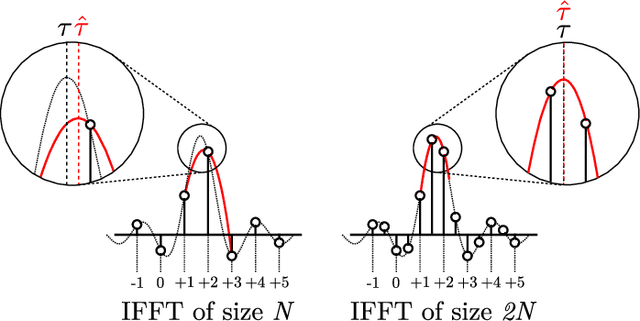
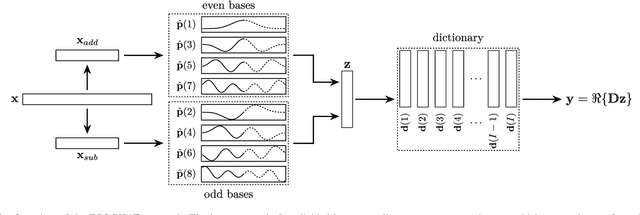
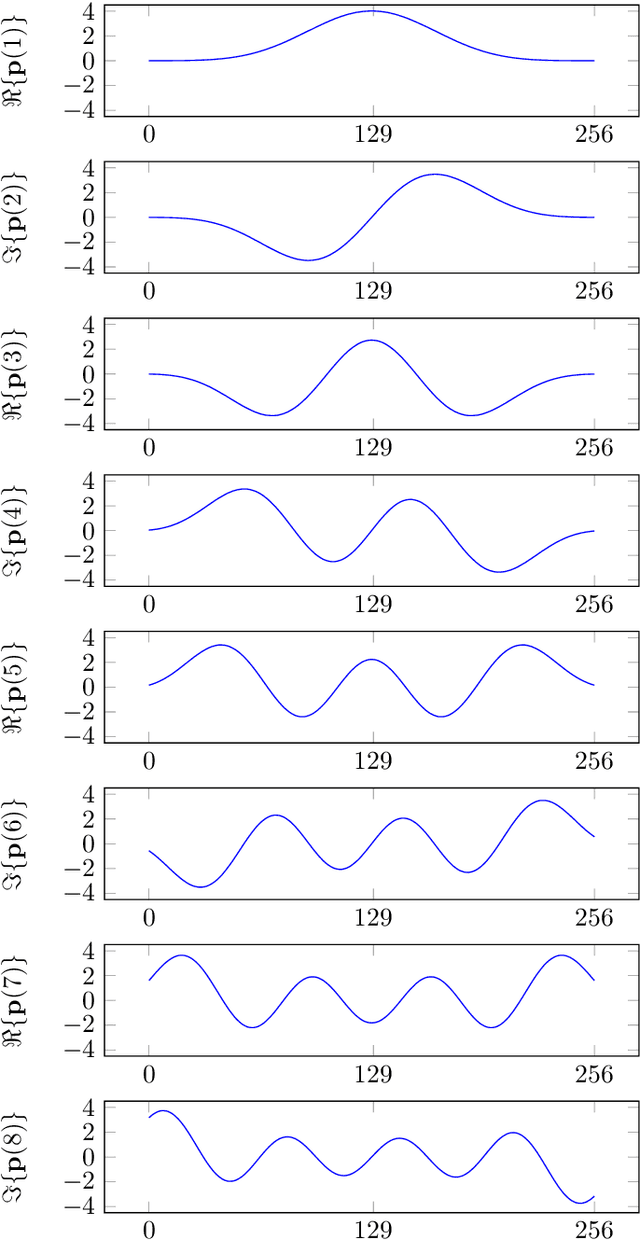
Abstract:This paper introduces the Fast Cross-Correlation (FCC) method for Time Difference of Arrival (TDoA) Estimation for pairs of microphones on a small aperture microphone array. FCC relies on low-rank decomposition and exploits symmetry in even and odd bases to speed up computation while preserving TDoA accuracy. FCC reduces the number of flops by a factor of 4.5 and the execution speed by factors of 8.2, 2.6 and 2.7 on a Raspberry Pi Zero, a Raspberry Pi 4 and a Nvidia Jetson TX2 devices, respectively, compared to the state-of-the-art Generalized Cross-Correlation (GCC) method that relies on the Fast Fourier Transform (FFT). This improvement can provide portable microphone arrays with extended battery life and allow real-time processing on low-cost hardware.
SMP-PHAT: Lightweight DoA Estimation by Merging Microphone Pairs
Mar 27, 2022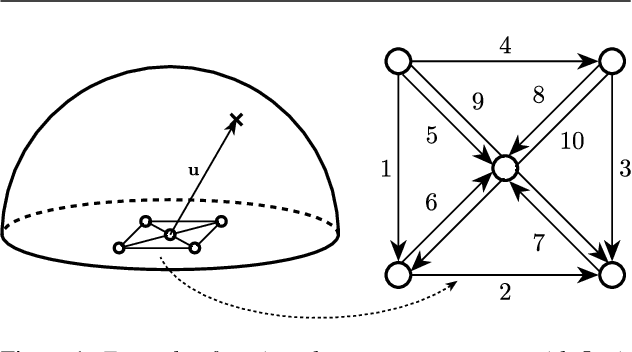
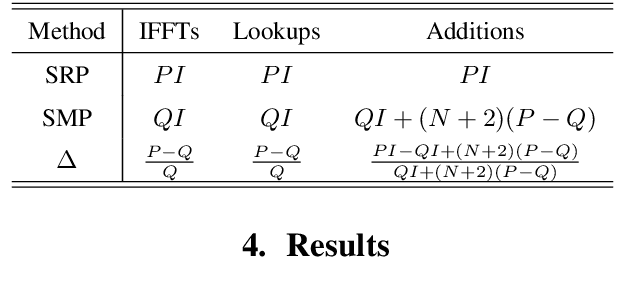
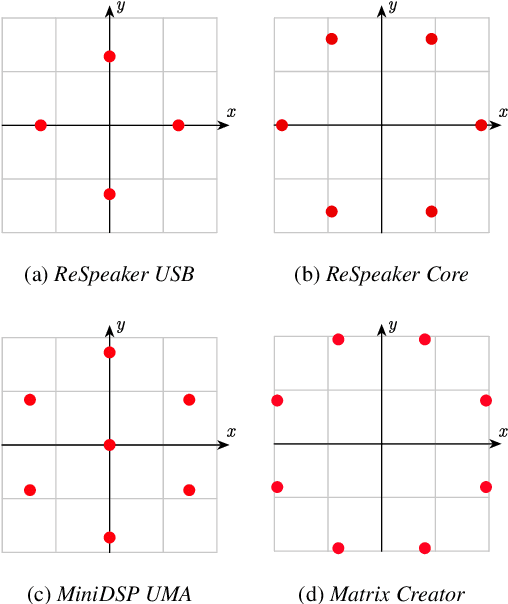
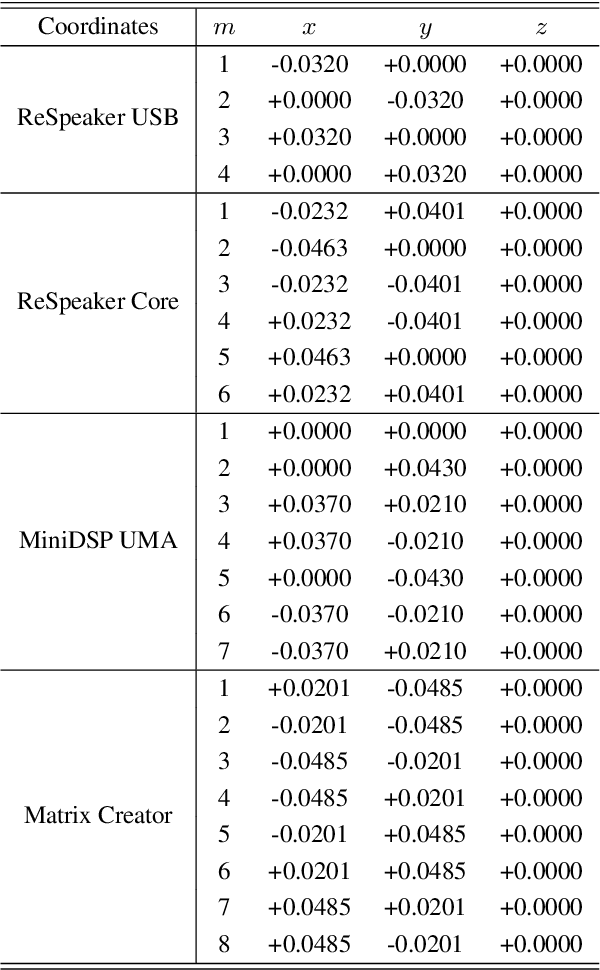
Abstract:This paper introduces SMP-PHAT, which performs direction of arrival (DoA) of sound estimation with a microphone array by merging pairs of microphones that are parallel in space. This approach reduces the number of pairwise cross-correlation computations, and brings down the number of flops and memory lookups when searching for DoA. Experiments on low-cost hardware with commonly used microphone arrays show that the proposed method provides the same accuracy as the former SRP-PHAT approach, while reducing the computational load by 39% in some cases.
OpenTera: A Microservice Architecture Solution for Rapid Prototyping of Robotic Solutions to COVID-19 Challenges in Care Facilities
Mar 10, 2021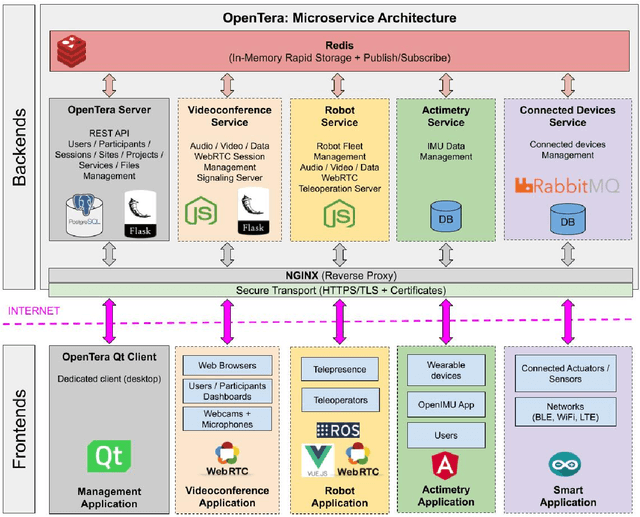
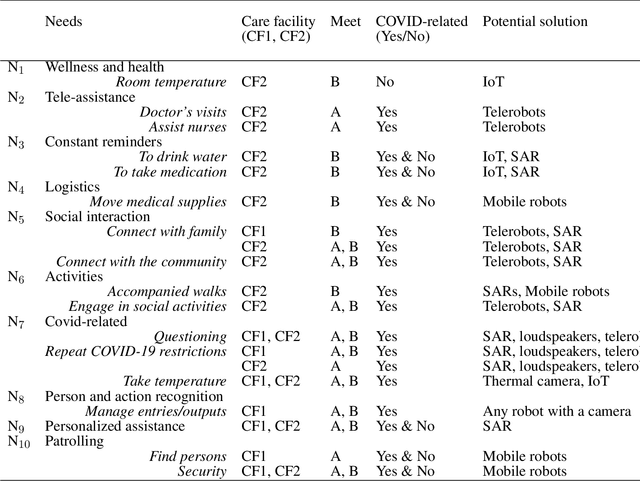
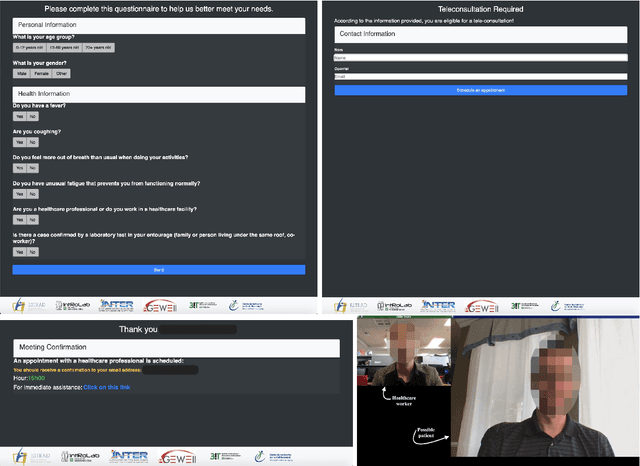
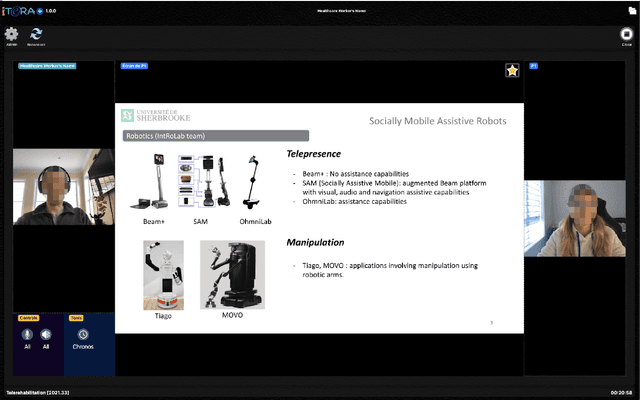
Abstract:As telecommunications technology progresses, telehealth frameworks are becoming more widely adopted in the context of long-term care (LTC) for older adults, both in care facilities and in homes. Today, robots could assist healthcare workers when they provide care to elderly patients, who constitute a particularly vulnerable population during the COVID-19 pandemic. Previous work on user-centered design of assistive technologies in LTC facilities for seniors has identified positive impacts. The need to deal with the effects of the COVID-19 pandemic emphasizes the benefits of this approach, but also highlights some new challenges for which robots could be interesting solutions to be deployed in LTC facilities. This requires customization of telecommunication and audio/video/data processing to address specific clinical requirements and needs. This paper presents OpenTera, an open source telehealth framework, aiming to facilitate prototyping of such solutions by software and robotic designers. Designed as a microservice-oriented platform, OpenTera is an end-to-end solution that employs a series of independent modules for tasks such as data and session management, telehealth, daily assistive tasks/actions, together with smart devices and environments, all connected through the framework. After explaining the framework, we illustrate how OpenTera can be used to implement robotic solutions for different applications identified in LTC facilities and homes, and we describe how we plan to validate them through field trials.
ODAS: Open embeddeD Audition System
Mar 05, 2021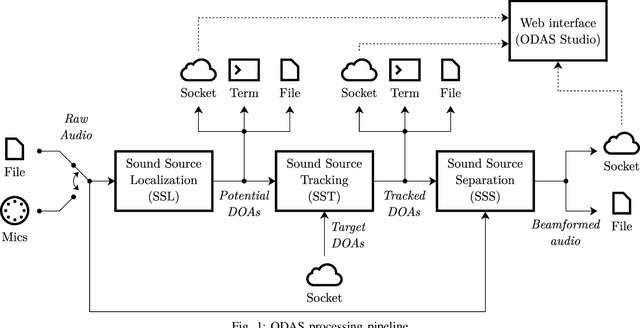
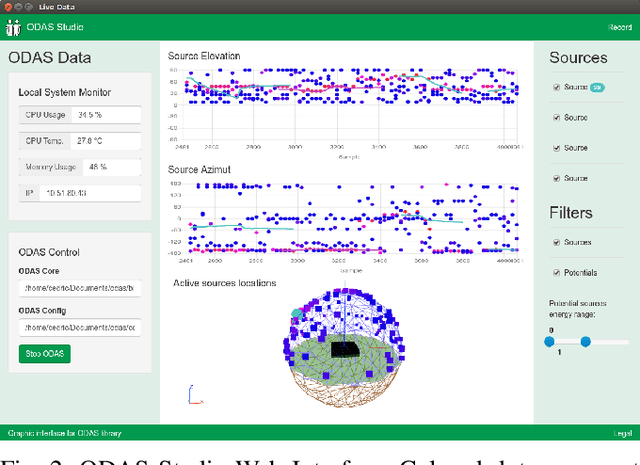
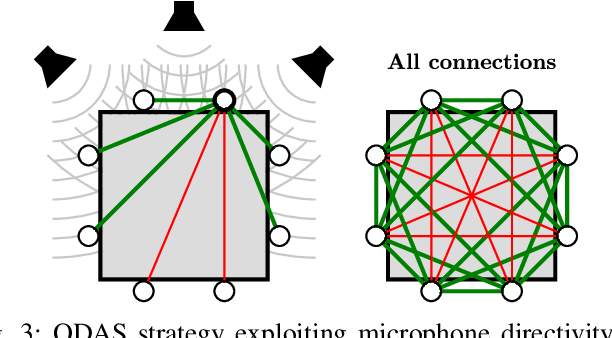
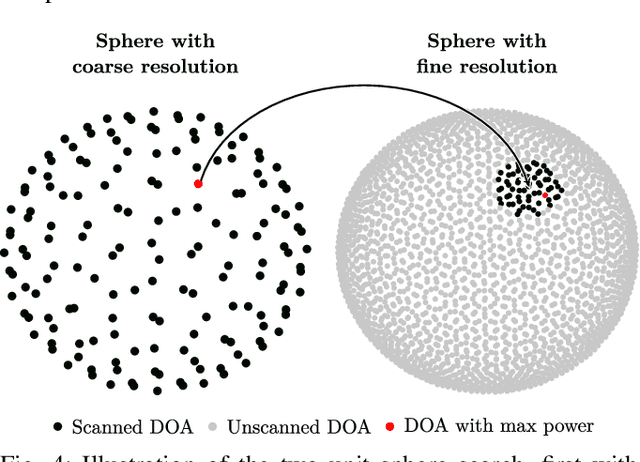
Abstract:Artificial audition aims at providing hearing capabilities to machines, computers and robots. Existing frameworks in robot audition offer interesting sound source localization, tracking and separation performance, but involve a significant amount of computations that limit their use on robots with embedded computing capabilities. This paper presents ODAS, the Open embeddeD Audition System framework, which includes strategies to reduce the computational load and perform robot audition tasks on low-cost embedded computing systems. It presents key features of ODAS, along with cases illustrating its uses in different robots and artificial audition applications.
Multi-Session Visual SLAM for Illumination Invariant Localization in Indoor Environments
Mar 05, 2021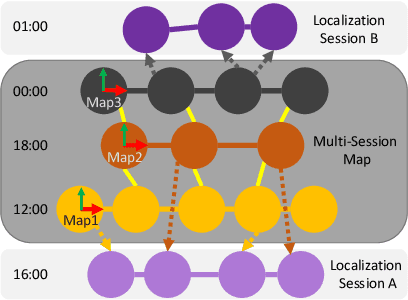
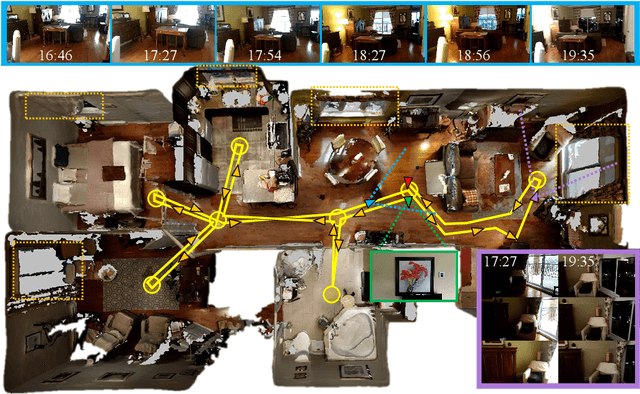
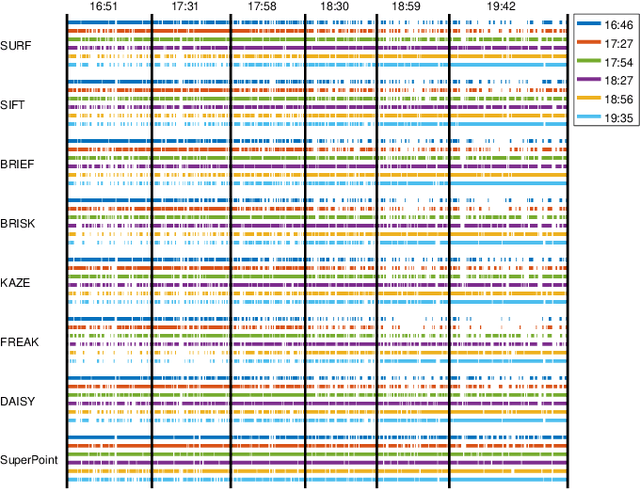
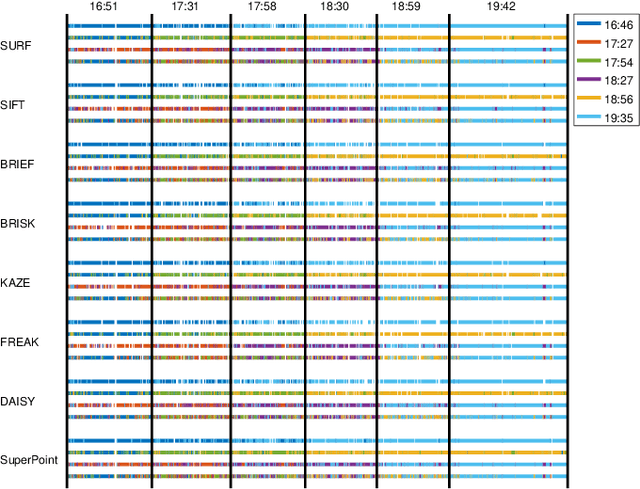
Abstract:For robots navigating using only a camera, illumination changes in indoor environments can cause localization failures during autonomous navigation. In this paper, we present a multi-session visual SLAM approach to create a map made of multiple variations of the same locations in different illumination conditions. The multi-session map can then be used at any hour of the day for improved localization capability. The approach presented is independent of the visual features used, and this is demonstrated by comparing localization performance between multi-session maps created using the RTAB-Map library with SURF, SIFT, BRIEF, FREAK, BRISK, KAZE, DAISY and SuperPoint visual features. The approach is tested on six mapping and six localization sessions recorded at 30 minutes intervals during sunset using a Google Tango phone in a real apartment.
 Add to Chrome
Add to Chrome Add to Firefox
Add to Firefox Add to Edge
Add to Edge